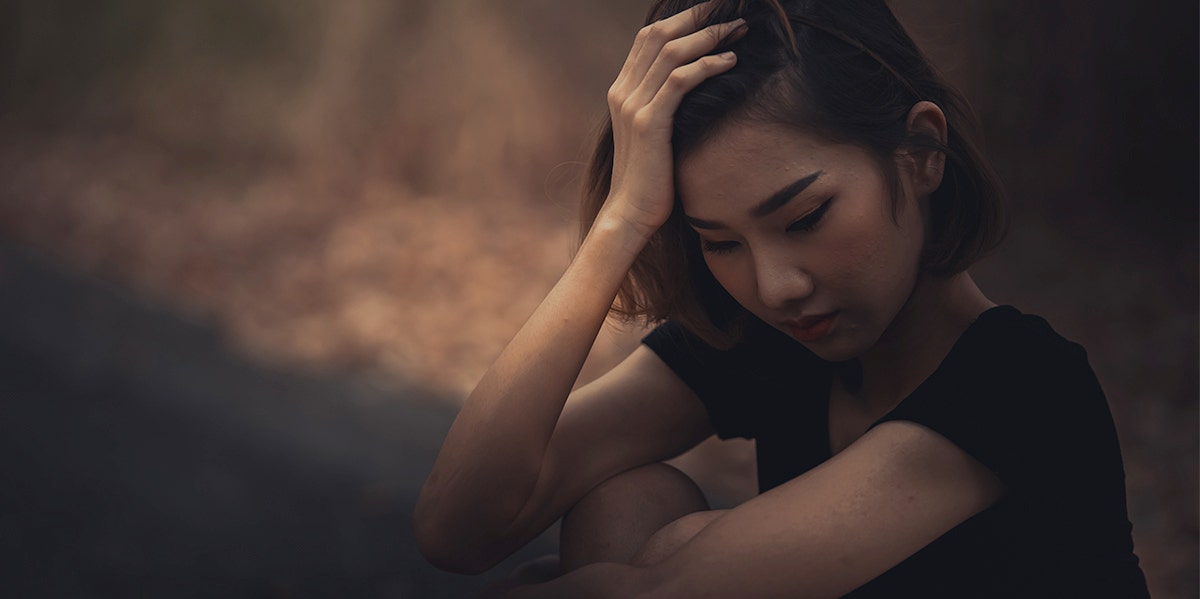The 6 Types Of Depression — And How You Can Tell The Difference
Depression can come in many different forms and all of them are painful.
 Blue Titan / Shutterstock
Blue Titan / Shutterstock We all know someone who is suffering from some kind of depression: our friends, family members, and even ourselves.
Depression can come in many different forms and have many different triggers. There can sometimes be a lack of understanding when it comes to depression as if someone suffering should just be able to pull it together. The truth is that those people dealing with depression need our support and caring as much, if not more, than anyone.
While depression can be sadness, that's not all there is to it, and it doesn't just come from having a bad day. Other things like genetics, abuse, medications, and major life events all have the potential to trigger a depressive episode.
In an article on Medical Daily, writer Ali Venosa looks at six different types of depression and how anybody dealing with one of them needs help and understanding:
1. Major Depressive Disorder/Clinical Depression
This is the most well-known of the depressions. Symptoms can include loss of energy or fatigue, feelings of worthlessness or guilt (almost every day), impaired concentration, not being able to sleep or sleeping too much, not being interested in the things you used to enjoy, restlessness, or feelings of being slowed down, weight loss or weight gain, and recurring thoughts of death or suicide. Patients speak of the all-consuming quality of this type of depression.
2. Persistent Depressive Disorder/Dysthymia
This form of depression happens when depressive symptoms become chronic. Symptoms include loss of interest in daily activities, sadness, emptiness, hopelessness, tiredness, lack of energy, low self-esteem, trouble concentrating and/or trouble making decisions, irritability, excessive anger, decreased activity, avoidance of social activities, feelings of guilt, poor appetite or overeating, and sleep problems. While symptoms are very similar to major depressive disorder, they may be less severe or last longer.
3. Bipolar Disorder/Manic Depressive Disorder
Bipolar disorder causes serious shifts in mood, energy, thinking, and behavior from the highs of mania to the lows of depression. Some bipolar disorder patients don't even notice their symptoms until a depressive episode happens and can be misdiagnosed as having a major depressive disorder.
Some of the symptoms during a depressive episode include intense sadness, withdrawal from the world, no interest in things you once enjoyed, tiredness, lack of energy, lack of appetite or overeating, slow-talking, lack of memory and ability to focus, poor decision-making skills, and interest in death and suicide.
4. Psychotic Depression/Depressive Psychosis
This type of depression is a combination of depression with psychotic symptoms. Symptoms include feelings of sadness, hopelessness, guilt, irritability, changes in eating, sleeping, and energy levels, delusions, hallucinations, and paranoia.
The psychotic symptoms usually take on a depressive theme. For example, if the patient is hearing voices, the voices will say things like they're worthless or they have no reason to be alive. These negative delusions can be especially dangerous and lead to suicide.
5. Postpartum Depression
This type of depression affects about 15 percent of women who give birth and manifests within four weeks of depression. Postpartum has many of the same symptoms as some of the other types of depression, including a change in appetite, sleeplessness or sleeping more than normal, sadness, difficulty concentrating, extreme fatigue, mood swings, thoughts of death, and anxiety.
There are also some additional symptoms: extreme concern and worry or lack of feelings for the baby, anger towards the baby, their partner, or other family members, fear of harming the baby, excessive crying, and making frequent calls to the pediatrician with an inability to be reassured.
6. Seasonal Affective Disorder/SAD
SAD is a mood disorder associated with depression and related to seasonal variations of light. SAD affects half a million people every winter between September and April, peaking in December, January, and February.
Symptoms can include feelings of guilt, hopelessness, despair, apathy, and loss of self-esteem, inability to tolerate stress, mood extremes, sleep problems, feelings of fatigue and inability to carry out normal routine, avoidance of social contact, loss of interest in physical contact and overeating.
A diagnosis of SAD can be made after three consecutive winters of symptoms, especially if they're followed by complete remission of symptoms in the spring and summer months.
If you are experiencing some of these symptoms, please seek medical attention and know that your life is valuable and people care about you. You're not alone.
Christine Schoenwald is a writer, performer, and astrology lover. She has written over 500 articles on the zodiac signs and how the stars influence us. She's had articles in The Los Angeles Times, Salon, Woman's Day, and is a contributing writer to Ravishly, I AM & CO, and YourTango. Check out her website, her Facebook writer's page, and her Instagram.

